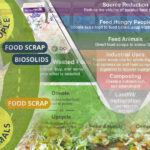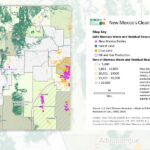BioCycle February 2014
San Francisco, California: CPUC Eases Rule On Biomethane
The California Public Utilities Commission (PUC) voted unanimously in early February to adopt new rules for the injection of biogas into the state’s natural gas pipelines. “This vote is ushering in an entirely new clean energy industry,” according to Assemblyman Mike Gatto, who wrote legislation that helped pave the way for the CPUC action. Biomethane, a renewable form of natural gas produced from biogas produced by anaerobic digesters and landfills, was previously banned from the California pipelines due to outdated laws and a lack of regulations for testing and monitoring the gas. The rules adopted by the CPUC (and the necessary statutory changes) stem from AB 1900, authored by Gatto, and AB 2196 (joint-authored by Gatto). “Creating an in-state biomethane industry is common sense,” said Gatto. “We can produce renewable power in our state, from sources that occur naturally. We can put Californians to work, clean our air, and keep utility bills low. I’m excited that the CPUC has taken the next step to create this landmark industry.” The Commission now embarks on Phase II of its biomethane rulemaking, which will address cost concerns associated with the new regulations. Meanwhile, utilities around California will be able to begin using biomethane to bring clean, renewable natural gas to their customers.
Albany, New York: $20 Million Funding For AD Projects
In January, Governor Andrew Cuomo announced approximately $20 million in New York State Renewable Portfolio Standard (RPS) funding that is available through 2015 to support the installation and operation of Anaerobic Digester Gas (ADG)-to-Electricity Systems in New York State. Funding is available on a first-come, first-served basis; up to $2 million is available per project, depending on the project specifications. Potential applicants are strongly encouraged to avail themselves of the ADG technical assistance available free of charge to those considering building an ADG-to-Electricity project in New York State. Assistance can include project technical evaluation, project planning, electrical grid interconnection assistance, sourcing of ADG feedstocks and other aspects of ADG-to-Electricity project development. Application packages must be received by NYSERDA on or before 5:00 PM Eastern Standard Time on December 31, 2015 or prior to the exhaustion of the available funding, whichever comes first. All program questions should be directed to: Tom Fiesinger, (518) 862-1090, ext. 3218, twf@nyserda.ny.gov, or Steve Hoyt, ext. 3587, sah@nyserda.ny.gov. All Contractual Questions should be directed to: Venice Forbes, ext. 3507, vwf@nyserda.ny.gov.
Killington, Vermont: Ski Resort Highlights Cow Power Program
Killington Ski Resorts released a YouTube video that highlights its participation in Green Mountain Power’s (GMP) “Cow Power” program which provides an incentive to Vermont dairies to develop anaerobic digesters. Participants (electricity users) pay a premium for the green energy. Staff at GMP work with farmers to help get them the resources they need to construct anaerobic digesters on their property for handling the manure while producing renewable electricity. The collaboration between Killington Ski Resorts and Monument Dairy Farms in Weybridge is an example of pairing an energy intensive industry with dairy farmers interested in biogas production. The Killington resort utilizes the energy it gets from the Cow Power program to run its K-1 Gondola. To watch the video, search “Environmental Cow Power” on YouTube.
Washington, DC: REAP Funding In 2014 Farm Bill
The Agricultural Act of 2014 reauthorized The Rural Energy for American Program (REAP), offering $50 million/year for five years in mandatory funding. REAP grants provide funds to agricultural producers and rural small businesses to purchase and install renewable energy systems, including anaerobic digesters. They pay up to 25 percent of the total cost of the project. The grants are awarded on a competitive basis; the maximum dollar amounts vary depending on purpose. Grants for renewable energy systems are limited to $500,000. REAP application deadlines for the 2014 fiscal year have not yet been set. For more information, visit www.rurdev.usda.gov/ rbs/busp/9006grant, or contact a state USDA Rural Development Office.
New York, New York: Goldman Sachs Investing $40 Billion In Renewables
Goldman Sachs recently announced it is investing $40 billion in the renewable energy sector, in several large equity investments, primarily for wind and solar power projects. For example, the bank is investing $1.5 billion in Dong Energy, a Danish offshore wind energy developer, and $500 million in SolarCity, the biggest U.S. installer.
In Japan, Goldman is backing Japan Renewable Energy with a $3 billion fund. Although the announcement did not include renewable energy from organics recycling, such as anaerobic digestion and biogas projects, the fact that a major bank is investing in the renewable energy sector is positive. Goldman projections for the sector include: The costs of solar will continue to drop as efficiency improves; renewable energy storage problems will be solved; and solar power pricing will be competitive with conventional sources without subsidies. Goldman is projecting major profits from its renewable energy investments.












